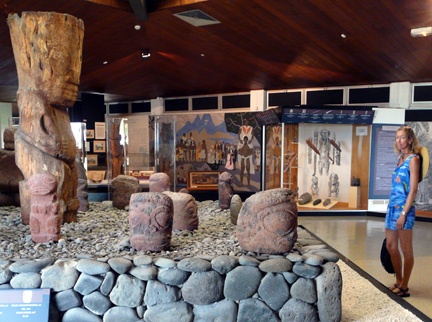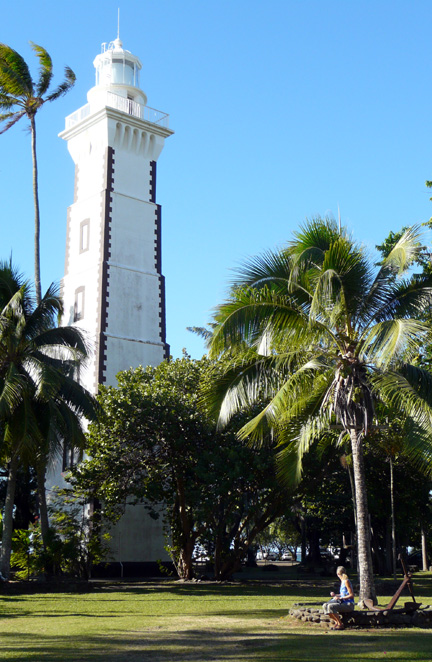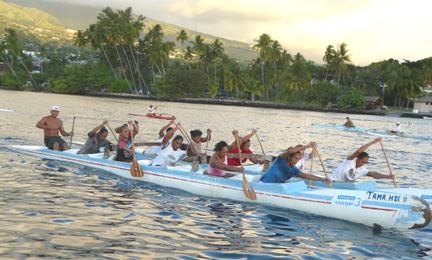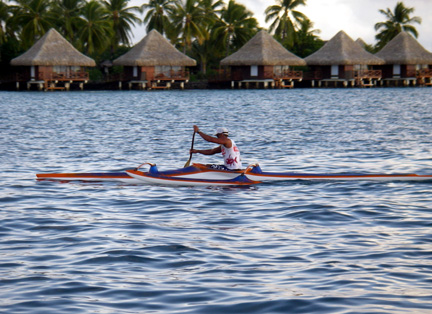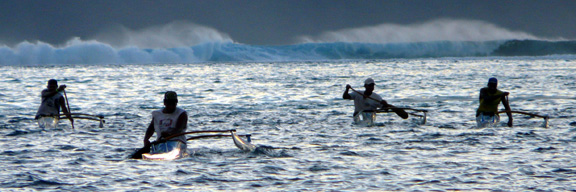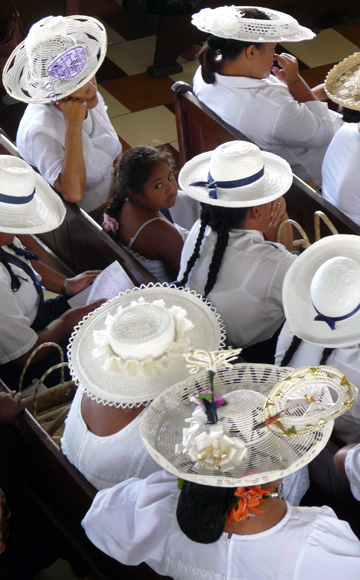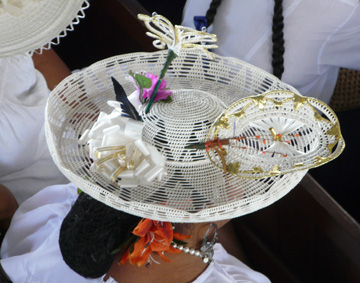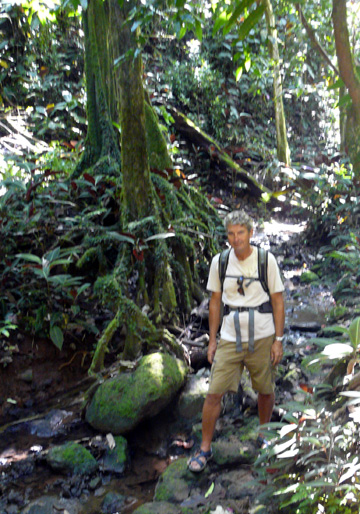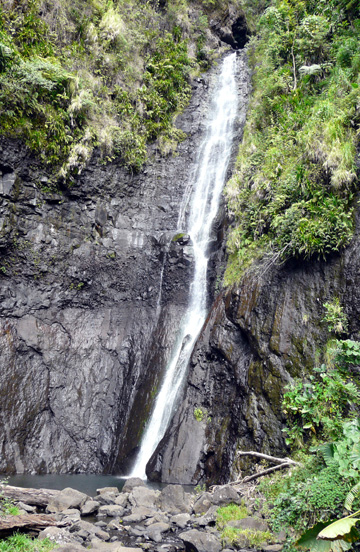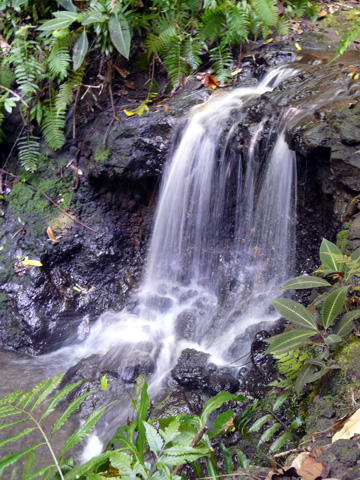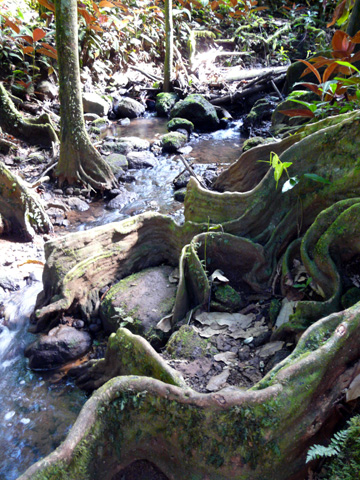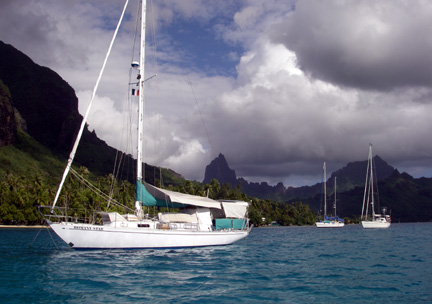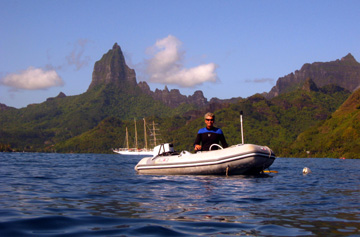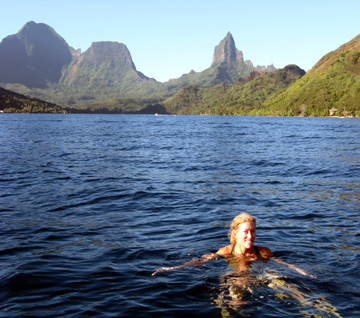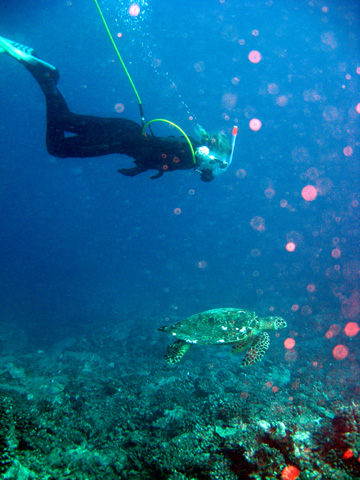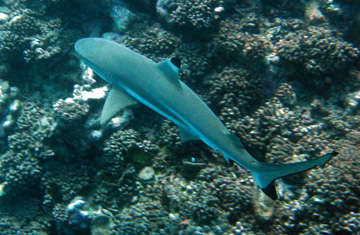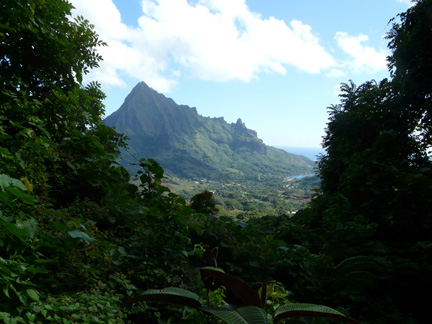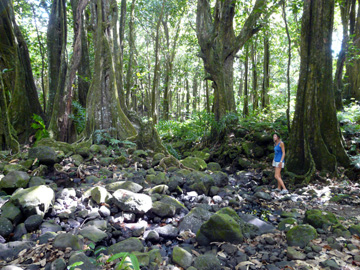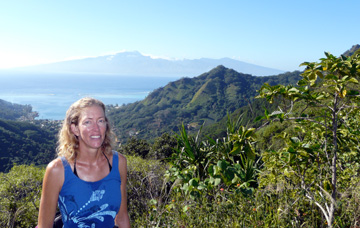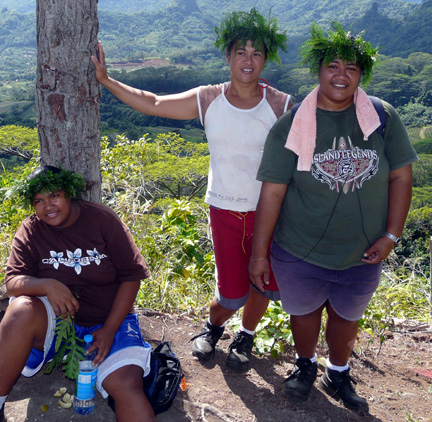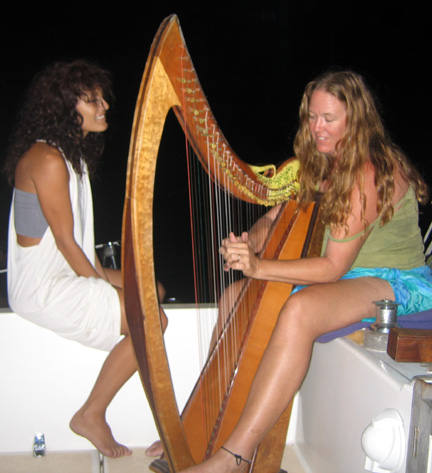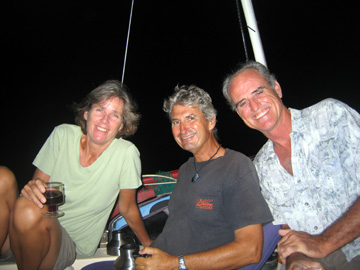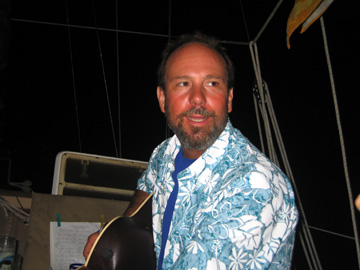Ancient tribal law said citizens could not let a stranger pass in front of their house without extending an invitation. If you ask directions, you are likely to be escorted to your destination. Many people smile and say "Bonjour" or "ia ora na" (pronounced yorana) when passing in the street. "Ia ora na" translates closer to "let there be life" of "let your life be" than simply "hello", which is an insufficient greeting to a Polynesian. Even though Tahiti is the most populated island in French Polynesia, life here is pretty laid-back. Girls collect flowers from trees, and old women dressed in pareus and clunky plastic shoes sit in plastic chairs gossiping while small children play in the roots of banyan trees.
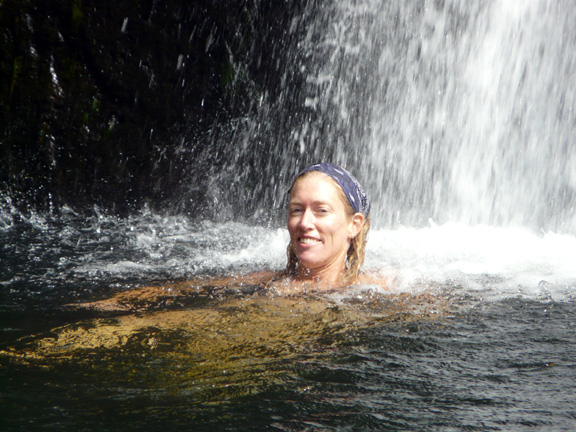
Erin enjoyed a refreshing swim in a pond below a waterfall (the highest of "Les Trois Cascades" on Tahiti). The sound at the base was deafening. Afterwards, tourists in their large air-conditioned buses were impressed by her soaked shorts.
